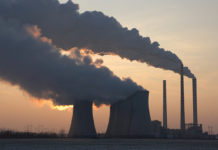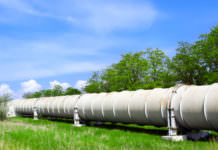
Following a brief two-year hiatus that featured one-party control in the House, Senate and White House, with January’s arrival of the 116th Congress, many are rightly focused on how the return of divided government will impact energy policy in the U.S.
While the new Congress has been convened for barely over a month, elected officials have taken several early steps to highlight the fact that energy policy will be a major point of emphasis on Capitol Hill over the next two years.
In its first weeks, members of the House and Senate have introduced bills to, among other things, address physical and cybersecurity concerns for pipelines and LNG facilities, reform and streamline federal permitting for onshore oil and gas projects, and allow states to conduct environmental reviews typically carried out by federal agencies.
Recent comments by Senate Republicans suggest that certain areas may be ripe for pursuit and advancement. For example, in a December interview with E&E News, Senate Energy and Natural Resources Committee Chairman Lisa Murkowski (R-AK) cited technology, cybersecurity, the Smart Grid and grid modernization as among the subjects on which Congress could reach an agreement. Senate Energy and Natural Resources Committee Ranking Member Joe Manchin (D-WV) subsequently underscored the potential for movement when he noted that technology research and development would be a major focus for the committee.
In calling for the application of innovation rather than regulation to address climate issues, in a Dec. 2018 New York Times op-ed Senate Environment and Public Works Committee Chairman John Barrasso (R-WY) specifically discussed legislative opportunities to support technological advances that will reduce carbon emissions and encourage greater utilization of nuclear energy.
Infrastructure is one high-profile topic that is certain to be front and center given that both Congress and the White House are seeking a legislative package. Recently, House Transportation & Infrastructure Committee Chairman Peter DeFazio (D-OR) conveyed a sense of urgency in announcing that he would convene a hearing in February to address infrastructure needs, saying, “I want people to emphasize how stupid we are and how unbelievably expensive it is if we don’t make these investments and we take the system to failure.”
Previous legislative proposals provide a potential roadmap on how a broad infrastructure bill might address energy. For example, a 2017 energy bill introduced by Senators Murkowski and Maria Cantwell (D-WA) addressed areas including cybersecurity, pipeline permitting, the processing of authorizations for liquefied natural gas facilities, electric grid storage and modernization, energy efficiency, and workforce development. In addition, in 2017, House Energy and Commerce Committee Chairman Frank Pallone, Jr. (D-NJ introduced an infrastructure bill to support grid modernization, energy efficiency, pipeline replacements and the deployment of renewable energy systems, among other things.
While there are areas of potential agreement when it comes to energy policy, a divided Congress also presents the reality that certain efforts will likely result in stalemate and inaction. Several recent actions underscore that dynamic:
• House leadership established a Select Committee on the climate crisis to investigate, study, make findings and develop recommendations on ways to “achieve substantial and permanent reductions in pollution and other activities that contribute to the climate crisis”
• Initiation of efforts to pursue a “Green New Deal” agenda
• Introduction of bills to enact carbon pricing, mandate a 100 percent renewable energy-based retail electric market by 2035 and an 80 percent reduction in greenhouse gas emissions (compared to 1990 levels) by 2050, re-establish Obama-era hydraulic fracturing regulations, and prohibit drilling in federal waters in the Atlantic, Gulf of Mexico, Arctic, and Pacific
• Unveiling of an aggressive climate oversight agenda, with hearings scheduled early on to address: “Climate Change: Impacts and the Need to Act” and “Time for Action: Addressing the Environmental and Economic Effects of Climate Change”
While the election of a Democrat-held House has been the major driver for much of this activity, certain efforts have attracted the support of a few Republicans. However, any legislative proposals that could adversely impact the trajectory of U.S. energy security and economic prosperity will likely face long odds in the Senate and at the White House.
Although recent changes on Capitol Hill will slow or preclude certain legislative opportunities for momentum in the energy space, federal agencies are poised to take action on a variety of fronts that will help shape the near-, mid- and long-term trajectory for U.S. energy policy, including the following:
• The Environmental Protection Agency (EPA) will complete a rulemaking on its proposal to revise New Source Performance Standards for the oil and natural gas industry
• EPA will complete rulemakings proposing to repeal an Obama-era rule that established carbon dioxide emission limits for existing fossil fuel-fired power plants and replace the rule with revised emission guidelines
• EPA will finalize a rule in which it proposes to revise greenhouse gas standards for new, modified, and reconstructed coal-fired power plants
• EPA and the National Highway Traffic Safety Administration will complete a rulemaking that would revise fuel economy and carbon dioxide emission standards for model-years 2021-2026 passenger cars and light trucks
• The Interior Department will determine the extent to which federal waters will be accessible for oil and natural gas leasing through 2024
Technological advances and human innovation have helped to unleash a historic energy renaissance that has catapulted the nation to lead the world in the production of natural gas and oil. The emergence of American energy leadership has also helped the United States lead the world in environmental progress, with the nation achieving the world’s biggest drop in carbon dioxide emissions in 2017 and emissions from the six common pollutants falling 73 percent between 1970 and 2017.
As Congress and the administration move forward, it is imperative that all those involved in federal policymaking ensure that their decisions reflect the positive impacts that the U.S. energy revolution continues to bring to America’s economy, national security, environment, and society. Guided by smart and sensible energy policies, the nation can further expand on these gains and help ensure an even more prosperous and vibrant future in the years and decades ahead.

Brent Greenfield serves as Vice President and Counsel at Cornerstone Energy Solutions. He provides clients with strategic policy and management guidance, research, analysis and communications support across the upstream, midstream, and downstream segments of the energy industry. In addition, Brent serves as executive director of the National Ocean Policy Coalition, an organization comprised of members representing sectors including energy, fishing, waterborne transportation, construction, agriculture, and critical infrastructure.

Jack Belcher joins Cornerstone in 2019 with over 25 years of experience in energy and energy policy. As senior vice president of Cornerstone Energy Solutions, he provides strategic and tactical advice to energy and transportation companies and financial institutions, focusing on government relations, regulatory affairs, public policy, strategical communications, situational risk management, and Environmental, Social, and Governance (ESG) performance. Jack also serves as managing director of the National Ocean Policy Coalition.














